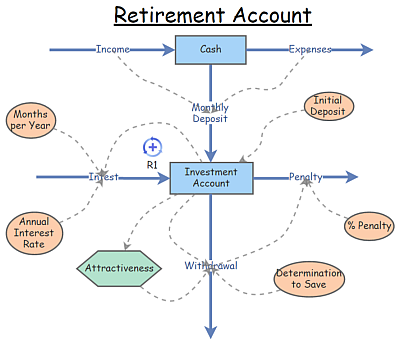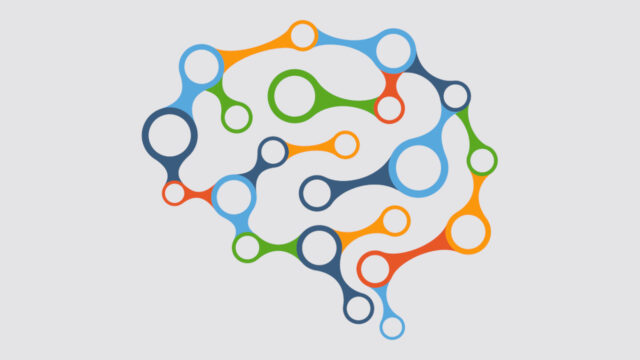
Developing understanding: Model 7 [Systems thinking & modelling series]
This is part 12 of a series of articles featuring the book Beyond Connecting the Dots, Modeling for Meaningful Results.
Why Aren’t We All Rich?
If one can put money in an investment account that grows over time, and grows even faster with regular deposits, why aren’t more people rich and ready for retirement? I’ve started numerous retirement programs through the years, but for one reason or another they’ve all evaporated in time. What is the basis of this sad state of affairs? “Why Aren’t We All Rich?” investigates some of the reasons behind this.
Soft influences are often not very obvious, even though they can have a major influence.
Need help? See the Model instructions
We now have a model that provides some incentives to start and continue to deposit money in an Investment Account. We also have disincentives toward withdrawing funds. However, have we really addressed the initial situation posed? Not really. There are incentives for starting the Investment Account and regularly depositing money. For many these incentives are enough to get them to invest. For others, for one reason on another, the incentive is not sufficient. For those people, additional or more strict incentives would likely be looked on unfavorably. People do not like to be manipulated, even when it is for their own benefit. The penalty for withdrawal is a deterrent in some respects, though as the Investment Account continues to grow, its attractiveness in terms of what it can purchase continues to entice. The best answer for this situation is to legally tie up the withdrawal process so it’s only an option in the case of dire emergencies. Though as much as people find being manipulated by others distasteful, being controlled by themselves is just as distasteful.
Is the model done? As usual, the answer is; “It Depends!” If it has provided sufficient understanding to address the situation posed, then it is sufficient. If not, then it should be taken further. NOTE: once it is sufficient you should STOP!
| Exercise 2-4 |
|---|
| There is a logic flaw in this model which you might try to repair. The Penalty is not actually taken from the Investment Account, but from the Withdrawal itself, so it reduces the amount you actually get from the Withdrawal. Be warned that this might be a tricky fix. |
Modeling tips: Before you run a model you should develop a sense of the result you expect from the model at the current point in its development. Once you run the model you should be certain that is it performing as expected. When the result is not what you expect then either the structure is wrong or your assumptions are wrong. Each case represents an opportunity to further develop your understanding. You should never be more than a single concept change away from a running model that produces a result that you understand. You may think this a bit strict, but after you add several elements to a model simply to find it doesn’t work, and you spend hours trying to figure out why, you may have a better appreciation for this guideline. Others will find it much easier to understand a model if you make all of its elements visible. This is why Months per Year and Initial Deposit were created as explicit variables rather than embedding the values inside other elements. It’s definitely worth repeating that providing comments for all the elements of a model will also make it much easier for others to understand. Comments in the model are easily read by doing a ‘mouse over’ an element, and clicking on the “i”.
Next edition: Developing understanding: Models 8-9.
Article sources: Beyond Connecting the Dots, Insight Maker. Reproduced by permission.
Header image source: Beyond Connecting the Dots.





